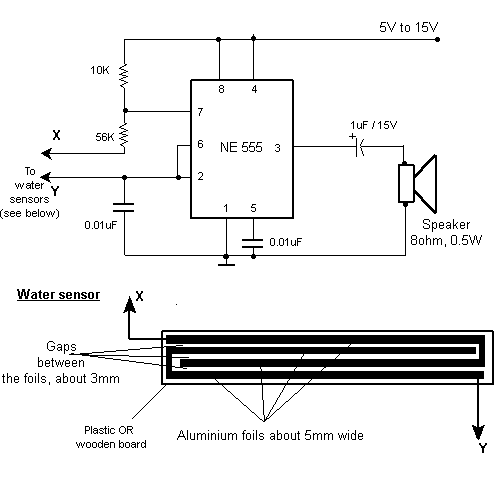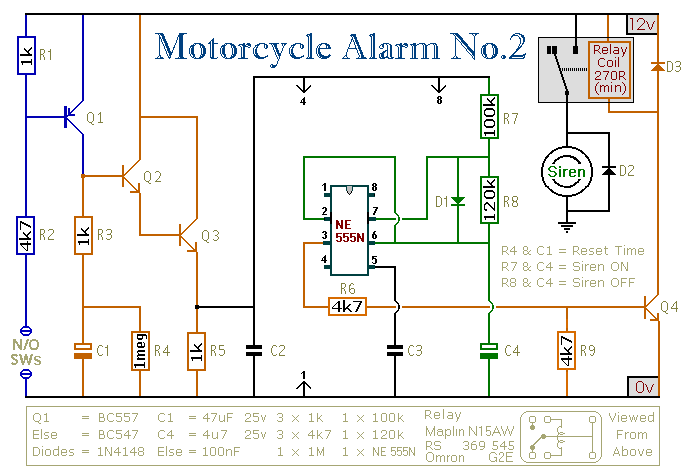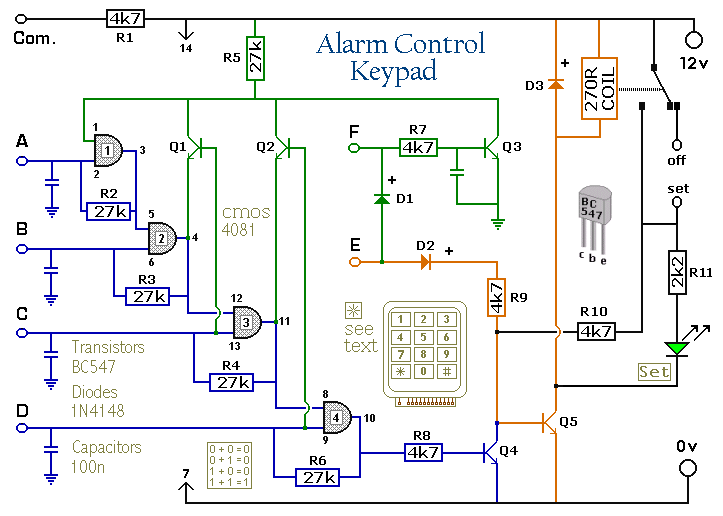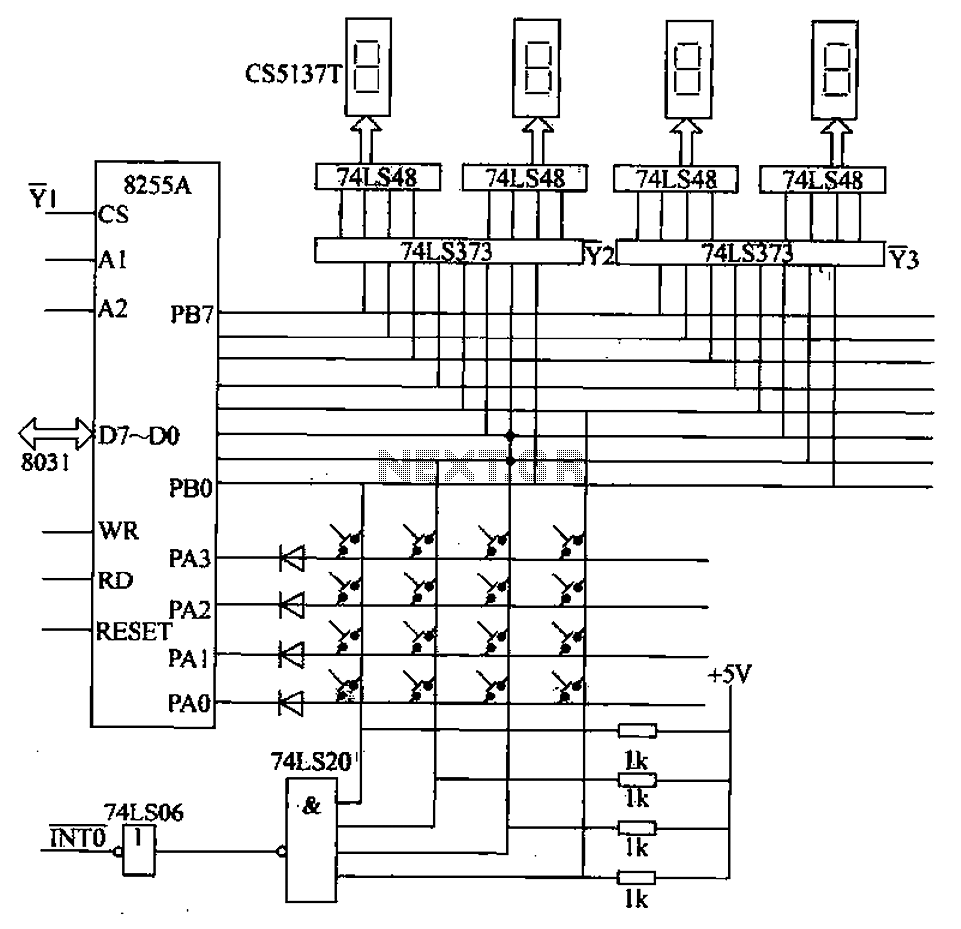
Water Alarm Circuit

This circuit activates an alarm when its sensor comes into contact with water. It employs a 555 astable multivibrator that generates a tone of approximately 1 kHz upon water detection.
The circuit consists of a 555 timer configured in astable mode, which continuously oscillates to produce a square wave output. The frequency of this output can be adjusted by selecting appropriate resistor and capacitor values connected to the 555 timer. In this application, the output frequency is set to around 1 kHz, which corresponds to a tone that can be easily recognized as an alarm sound.
The sensor component, typically a pair of conductive probes, is placed in a position where it can detect the presence of water. When water bridges the gap between the probes, it completes the circuit, triggering the 555 timer. The output of the timer is connected to a speaker or buzzer, which emits the audible alarm.
To ensure reliable operation, it is crucial to select the right resistors and capacitors for the desired frequency and to consider the sensitivity of the sensor. Additionally, incorporating a diode may be beneficial to protect the circuit from potential back EMF generated by the buzzer.
Power supply considerations should also be addressed, as the circuit typically operates on a low voltage, often supplied by batteries or a DC power source. Proper grounding and layout design will enhance the circuit's performance and longevity. Overall, this water detection alarm circuit provides an effective solution for alerting users to the presence of water through a simple yet efficient electronic design.This circuit gives out an alarm when its sensor is wetted by water. A 555 astable multivibrator is used here which gives a tone of about 1kHz upon detecting water. .. 🔗 External reference
The circuit consists of a 555 timer configured in astable mode, which continuously oscillates to produce a square wave output. The frequency of this output can be adjusted by selecting appropriate resistor and capacitor values connected to the 555 timer. In this application, the output frequency is set to around 1 kHz, which corresponds to a tone that can be easily recognized as an alarm sound.
The sensor component, typically a pair of conductive probes, is placed in a position where it can detect the presence of water. When water bridges the gap between the probes, it completes the circuit, triggering the 555 timer. The output of the timer is connected to a speaker or buzzer, which emits the audible alarm.
To ensure reliable operation, it is crucial to select the right resistors and capacitors for the desired frequency and to consider the sensitivity of the sensor. Additionally, incorporating a diode may be beneficial to protect the circuit from potential back EMF generated by the buzzer.
Power supply considerations should also be addressed, as the circuit typically operates on a low voltage, often supplied by batteries or a DC power source. Proper grounding and layout design will enhance the circuit's performance and longevity. Overall, this water detection alarm circuit provides an effective solution for alerting users to the presence of water through a simple yet efficient electronic design.This circuit gives out an alarm when its sensor is wetted by water. A 555 astable multivibrator is used here which gives a tone of about 1kHz upon detecting water. .. 🔗 External reference





